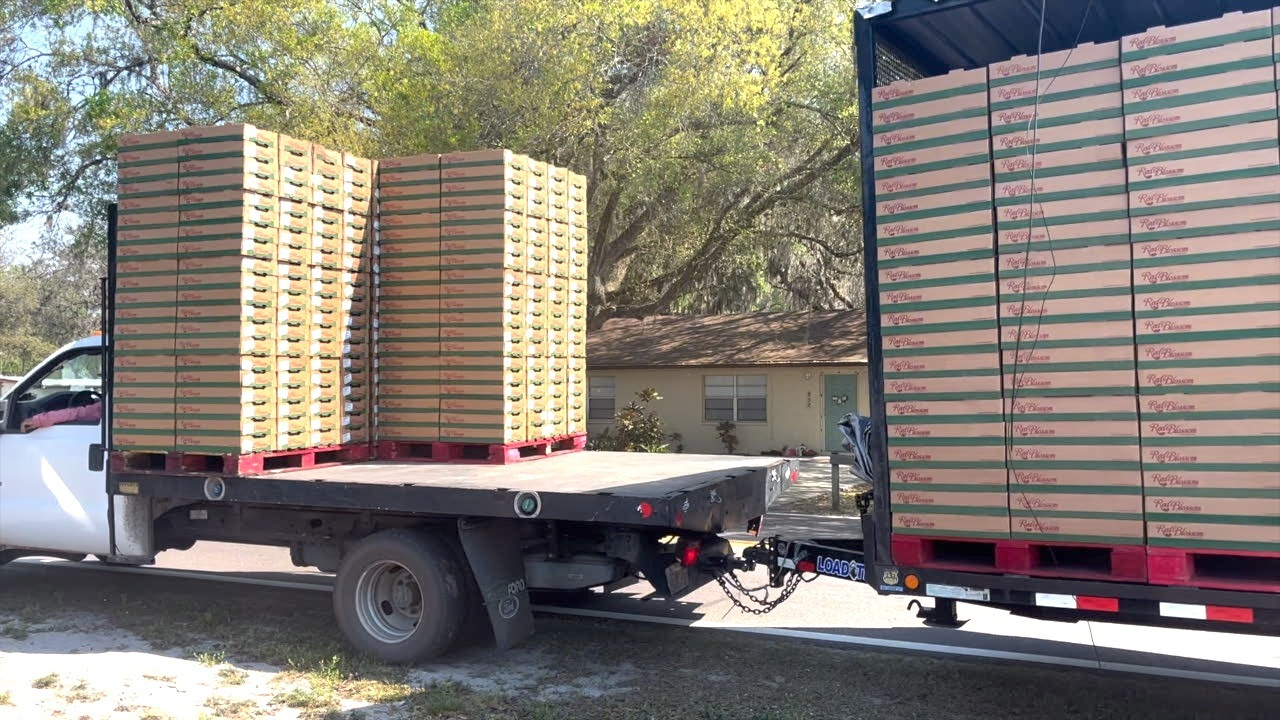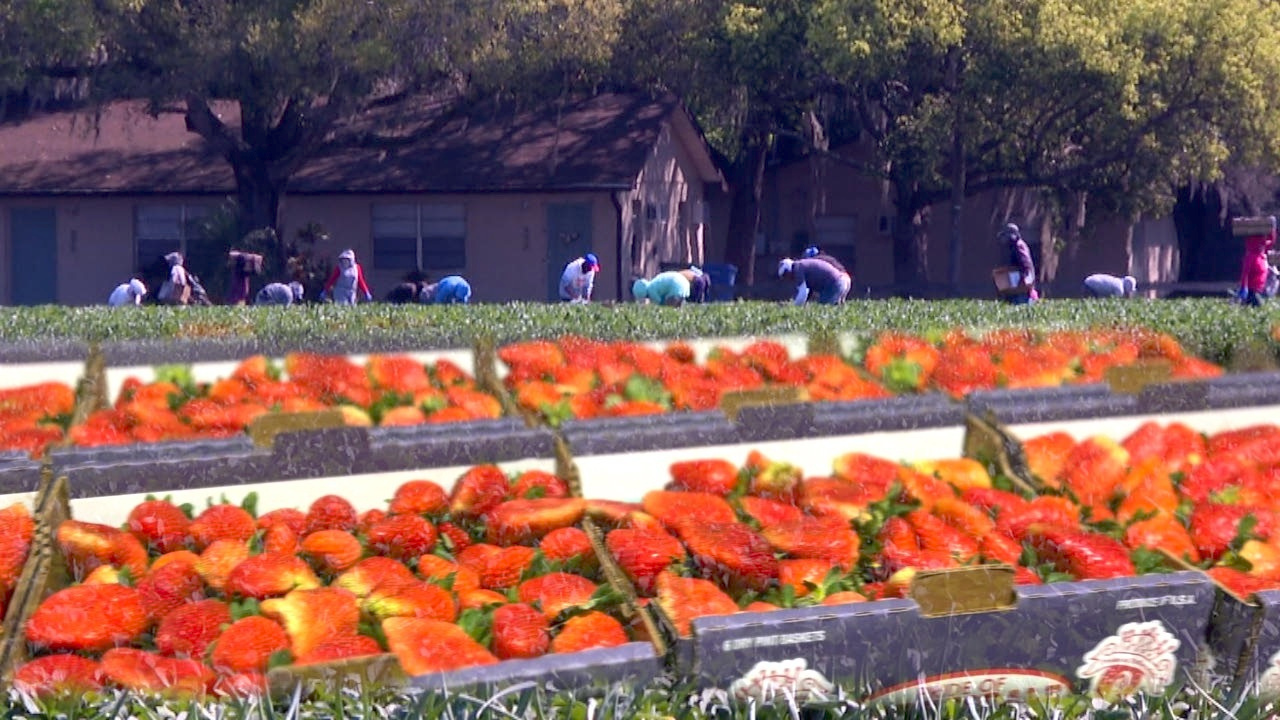HILLBOROUGH COUNTY, Fla. — The Florida Strawberry Festival in Plant City continues through this weekend — a time to celebrate one of the sweetest industries in the state. Still, it's also a time to highlight the struggles local farmers are going through now.
"Every year since COVID has had an increase of anywhere from 10 to 15%. So we're at a 30% increase right now," said Matt Parke, a fourth generation strawberry farmer in Plant City.

Even though they're selling more as people have become more health conscious from the pandemic, Parke said it's not enough to battle inflation.
But that's not the biggest problem plaguing the industry; farmers say it's berries from across the border.
"Our biggest threat is Mexico. You know, we're having to deal with the influx of berries pouring across the, across the southern border into the United States."

Florida is the second largest strawberry-producing state in the U.S., after California, at a value of more than $300 million, according to the University of Florida Institute of Food and Agricultural Sciences.
In-depth stats from the Florida Department of Agriculture and Consumer Services show that from 2001 to 2021, Florida lost nearly 32% of the strawberry market share within the U.S., while Mexico gained 240%.
"The problem is when you're getting a lot of product coming out of from another country, that grows it so much cheaper. They don't have the same rules. Their government subsidizes them huge. Their labor is probably 15% of what ours costs, and labor is our highest cost," explained David Hill, Chair of the Florida Fruits and Vegetables Association (FFVA). "It makes it very difficult to try to stay in business."

Another study by the University of Florida in 2018 found that U.S. farms paid strawberry pickers anywhere from $1.75 to $3 for a flat of berries, depending on the season. That's compared to Mexico, which spent 15 pesos or about a dollar per flat.
"I feel like maybe in the next 10 to 15 years, Mexico is going to own our vegetable and fruit market, and we're not going to be growing in the United States anymore," Parke stressed. "We're going to depend on the foreign country to deliver us with all of our fruits and vegetables."
Hill said he agrees that the local farms could go extinct in the next decade.
Hill also runs Southern Hill Farms and said he, like many other small farms, has added "U-Pick" operations to bring locals in for the experience of picking produce themselves.
"It's almost safe to say that we need the federal government to step in to save Florida farmers, all farmers," ABC Action News Reporter Stassy Olmos asked Hill.
"What we've been asking the federal government is to step in and regulate not just what we do, but the amount of supply coming in from other countries. And we need to find that mark… and either or not allow it to go over that mark or put tariffs on it if it does go over the mark," Hill exclaimed.
While farmers hope and pray for federal help, they say the one thing that U.S. consumers can do is check the labels before they buy.

"We need, not just my family business, but any agricultural family business in the United States, needs the United States Consumer to buy locally grown food," Parke said.
The Florida Commissioner of Agriculture, Wilton Simpson, said in an email statement:
"The federal government's current policies are one of the biggest hindrances to the continued success of Florida's farmers and ranchers. As Commissioner of Agriculture, l will continue to advocate for commonsense considerations in these policies that acknowledge Florida's important role in feeding our state, nation, and planet."
We also contacted the United States Department of Agriculture to ask what they are doing to help local farmers survive with increased imports. Unfortunately, we did not receive a response.
Parkesdale Farms plans to sell its strawberries in Publix stores next year. Right now, they are available in several states outside of Florida and at their local produce market Parkesdale Market.
Click here to see the USDA weekly shipments of strawberries in the U.S.
Click here to read the latest overall farm forecast from the USDA.





